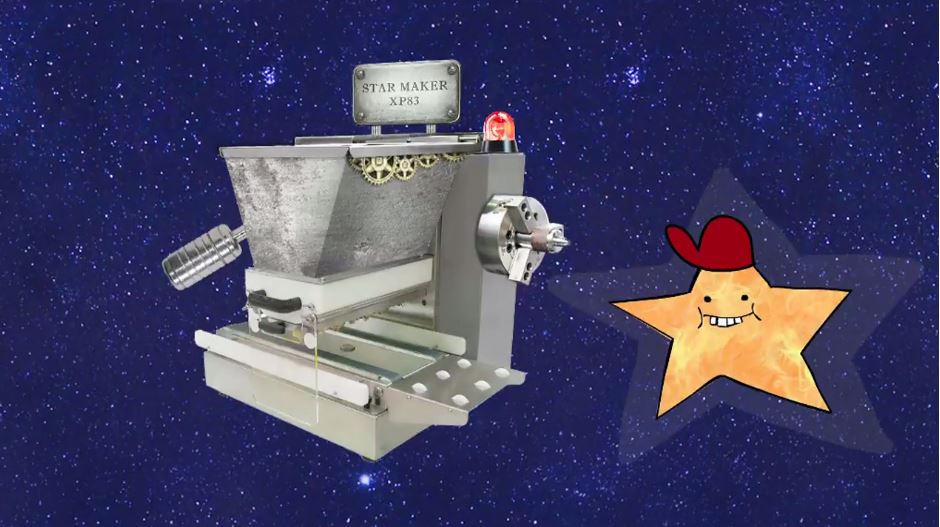Why we need Gaia
Duration: 1 min 35 secs
Share this media item:
Embed this media item:
Embed this media item:
About this item

| Description: |
How old are the stars?
Turns out it's not so easy to tell. This cartoon shows how the Gaia spacecraft will uncover the timeline of our universe by measuring the stars. |
|---|
| Created: | 2014-01-21 11:59 | ||
|---|---|---|---|
| Collection: | Gaia in one minute | ||
| Publisher: | Institute of Astronomy | ||
| Copyright: | Institute of Astronomy | ||
| Language: | eng (English) | ||
| Keywords: | Gaia mission; | ||
| Credits: |
|
||
| Abstract: | How old are the stars?
Turns out it's not so easy to tell. This cartoon shows how the Gaia spacecraft will uncover the timeline of our universe by measuring the stars. This cartoon is part of a series following one man and his cat as they learn about space, created by Angel Eye Media and the Gaia team in Cambridge. Narrated by Dara O Briain. |
|---|---|
Transcript
Transcript:
Dara Ó Briain:
When there’s so much to do in the world, why on earth would anyone want to spend time looking at the stars?
Well, for a start, it was the stars that created most of the elements that make up everything around us in the first place.
The first stars were formed back when the universe was pretty much only hydrogen and helium, and gravity packed them then with enough force to trigger a nuclear fusion.
The fusion then created heavier elements like carbon, nitrogen and oxygen.
And then, when the stars exploded as supernovae, more elements were created to become part of the next generation of stars.
So, much like cutting down a tree and counting the rings, you can tell the rough age of a star by counting the amount of heavy elements within it.
Giving us a rudimentary clock of the universe.
Studying then the development of stars using this clock will give us a timeline of the universe itself.
The very basic clock of the universe that we have now is based on a hazy knowledge of the ages of stars.
By filming and measuring the stars, Gaia will provide a comprehensive breakdown of their histories.
Thus calibrating the clock.
The data will give us a more detailed picture of the makeup of the stars, allowing us to extrapolate both backwards and forwards across the life of the whole universe.
So, by studying the stars we will not only look into the past, but also into the future.
When there’s so much to do in the world, why on earth would anyone want to spend time looking at the stars?
Well, for a start, it was the stars that created most of the elements that make up everything around us in the first place.
The first stars were formed back when the universe was pretty much only hydrogen and helium, and gravity packed them then with enough force to trigger a nuclear fusion.
The fusion then created heavier elements like carbon, nitrogen and oxygen.
And then, when the stars exploded as supernovae, more elements were created to become part of the next generation of stars.
So, much like cutting down a tree and counting the rings, you can tell the rough age of a star by counting the amount of heavy elements within it.
Giving us a rudimentary clock of the universe.
Studying then the development of stars using this clock will give us a timeline of the universe itself.
The very basic clock of the universe that we have now is based on a hazy knowledge of the ages of stars.
By filming and measuring the stars, Gaia will provide a comprehensive breakdown of their histories.
Thus calibrating the clock.
The data will give us a more detailed picture of the makeup of the stars, allowing us to extrapolate both backwards and forwards across the life of the whole universe.
So, by studying the stars we will not only look into the past, but also into the future.
Available Formats
| Format | Quality | Bitrate | Size | |||
|---|---|---|---|---|---|---|
| MPEG-4 Video | 1280x720 | 2.98 Mbits/sec | 35.48 MB | View | Download | |
| MPEG-4 Video | 640x360 | 1.93 Mbits/sec | 23.02 MB | View | Download | |
| WebM | 1280x720 | 2.88 Mbits/sec | 34.59 MB | View | Download | |
| WebM | 640x360 | 1.4 Mbits/sec | 16.82 MB | View | Download | |
| iPod Video | 480x270 | 512.74 kbits/sec | 5.95 MB | View | Download | |
| MP3 | 44100 Hz | 250.44 kbits/sec | 2.90 MB | Listen | Download | |
| Auto * | (Allows browser to choose a format it supports) | |||||

